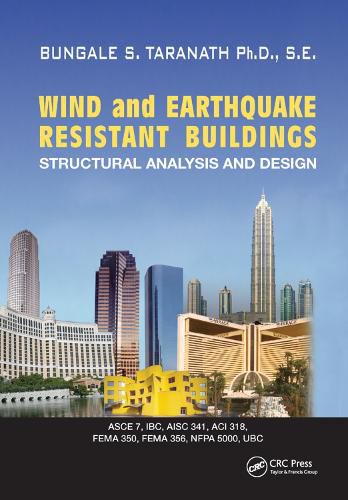Readings Newsletter
Become a Readings Member to make your shopping experience even easier.
Sign in or sign up for free!
You’re not far away from qualifying for FREE standard shipping within Australia
You’ve qualified for FREE standard shipping within Australia
The cart is loading…






Developed as a resource for practicing engineers, while simultaneously serving as a text in a formal classroom setting, Wind and Earthquake Resistant Buildings provides a fundmental understanding of the behavior of steel, concrete, and composite building structures. The text format follows, in a logical manner, the typical process of designing a building, from the first step of determining design loads, to the final step of evaluating its behavior for unusual effects.
Includes a worksheet that takes the drudgery out of estimating wind response.
The book presents an in-depth review of wind effects and outlines seismic design, highlighting the dymamic behavior of buildings. It covers the design and detailing the requirements of steel, concrete, and composite buidlings assigned to seismic design categories A through E. The author explains critical code specific items and structural concepts by doing the nearly impossible feat of addressing the history, reason for existence, and intent of major design provisions of the building codes. While the scope of the book is intentionally broad, it provides enough in-depth coverage to make it useful for structural engineers in all stages of their careers.
$9.00 standard shipping within Australia
FREE standard shipping within Australia for orders over $100.00
Express & International shipping calculated at checkout
Developed as a resource for practicing engineers, while simultaneously serving as a text in a formal classroom setting, Wind and Earthquake Resistant Buildings provides a fundmental understanding of the behavior of steel, concrete, and composite building structures. The text format follows, in a logical manner, the typical process of designing a building, from the first step of determining design loads, to the final step of evaluating its behavior for unusual effects.
Includes a worksheet that takes the drudgery out of estimating wind response.
The book presents an in-depth review of wind effects and outlines seismic design, highlighting the dymamic behavior of buildings. It covers the design and detailing the requirements of steel, concrete, and composite buidlings assigned to seismic design categories A through E. The author explains critical code specific items and structural concepts by doing the nearly impossible feat of addressing the history, reason for existence, and intent of major design provisions of the building codes. While the scope of the book is intentionally broad, it provides enough in-depth coverage to make it useful for structural engineers in all stages of their careers.